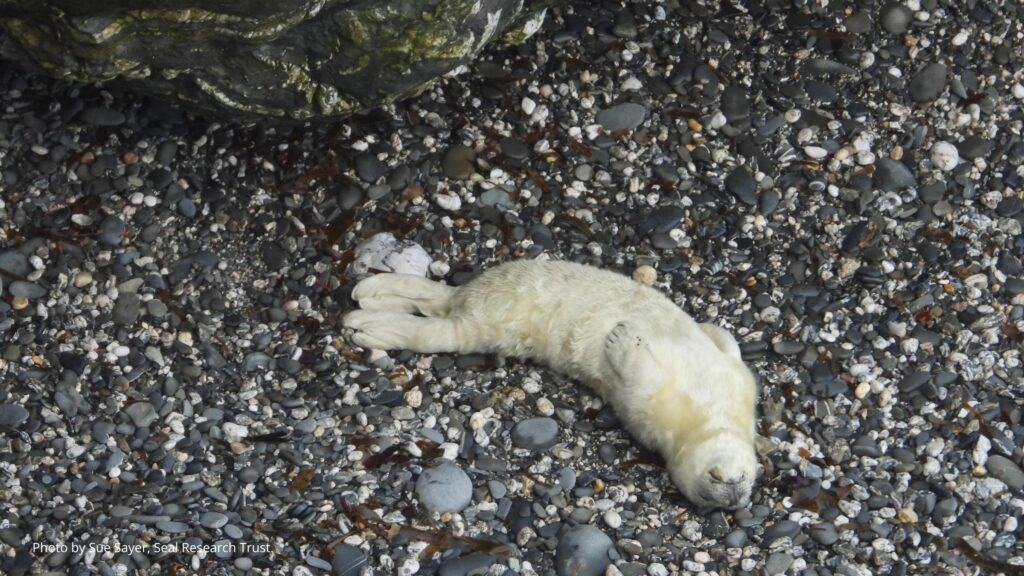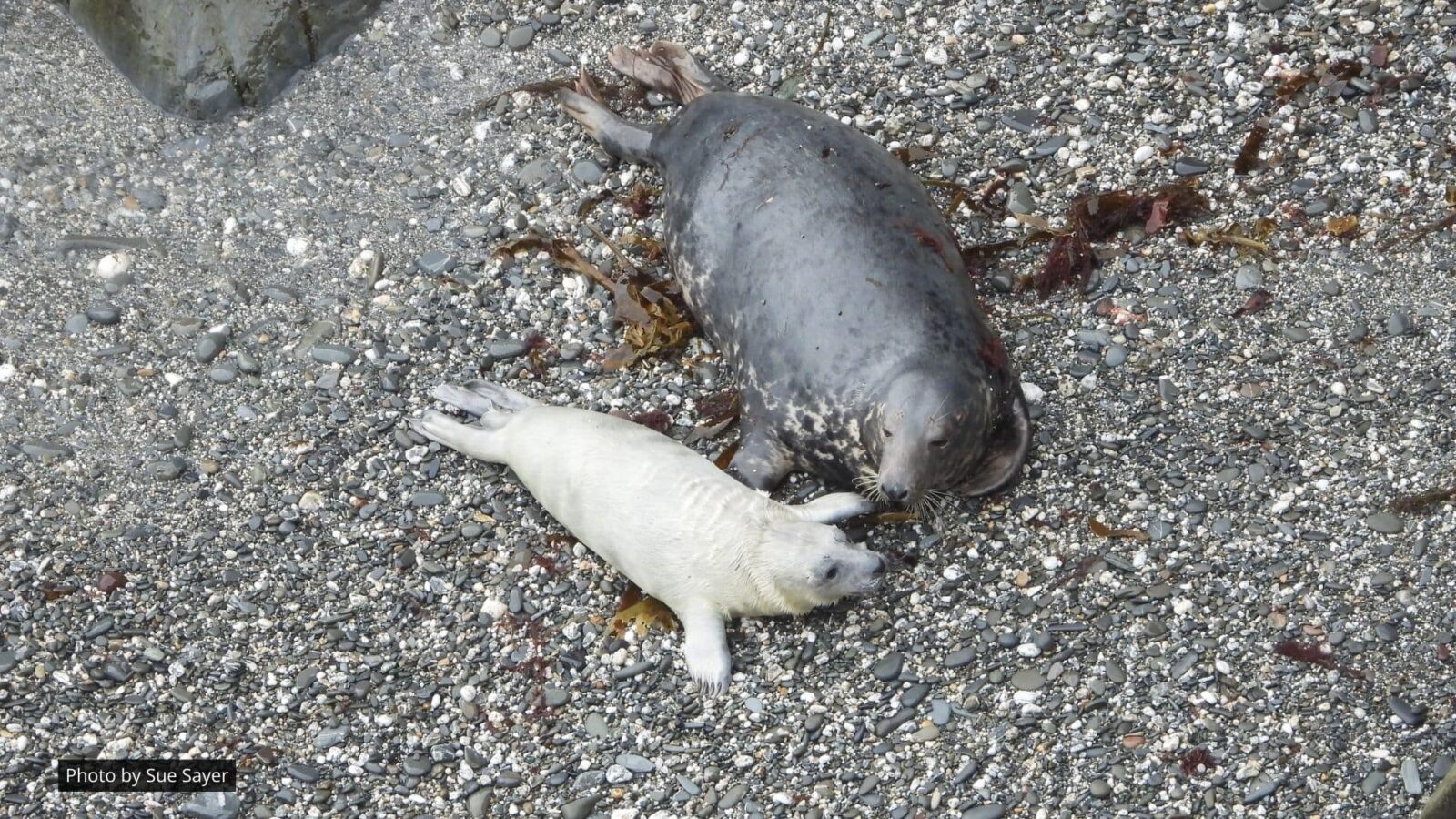This blog is from Sue Sayer MBE, a biodiversity tutor at the Field Studies Council and an internationally renowned researcher and author. For over 20 years, Sue has spent thousands of hours observing seals in the wild from land and at sea in Cornwall. As the founder of the Seal Research Trust (SRT), Sue has been educating and inspiring citizen scientists to help protect our precious marine species and their environment for future generations to enjoy.
This blog delves into pupping season, looking at how things have changed over the years, and how we can all do our bit to protect these fantastic animals.
2023 Pupping season updates
The 2023 southwest UK pupping season kicked off in earnest around the same time as last year in the last week of August (with a trickle of pups prior to that) – and this is EARLY!
Records seem to suggest that the pupping season is moving forward by a few days each year, meaning that it now overlaps with our peak tourist season. One seal mum called ‘Scream’ had her pup 25 days earlier in 2023 compared to 2017. There is an average shift of around 4 days a year earlier.
With worrying signs from Scotland and the southwest that mortality rates are high (see below for the range of threats seals face these days), all seals, but especially pups, need our help now!
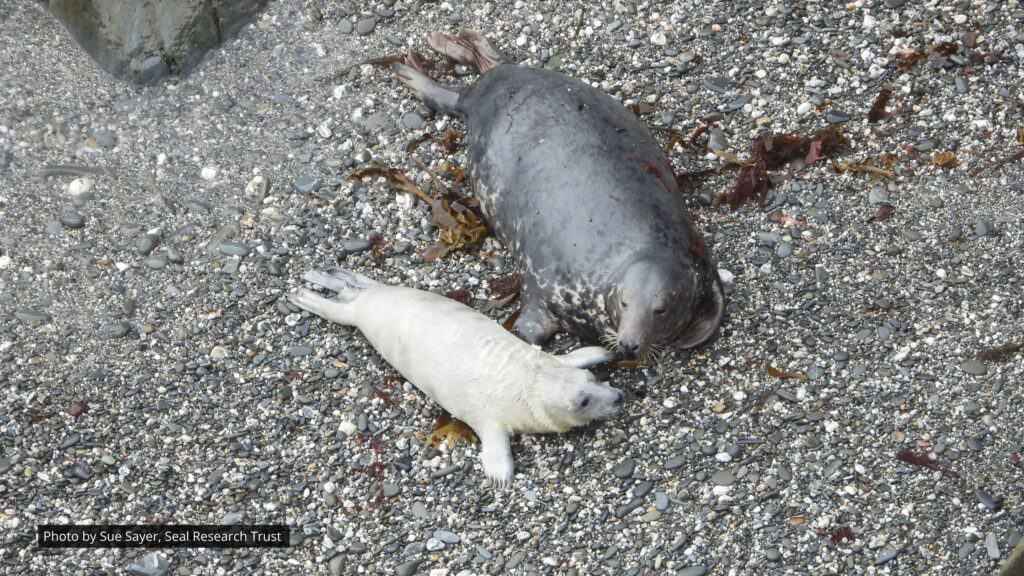
What threats are seals facing?
Seals are facing increasing challenges in terms of prey availability, bycatch/entanglement, habitat loss, disturbance, and pollution – both physical and from chemical outflows. The sources of these outflows include industrial waste, agriculture, transportation, and household activities including emerging issues such as pharmaceutical runoff (e.g. painkillers and hormones). On top of all this, there are the new additional effects associated with climate change.
Climate change impacts on seals include:
- Warming seas change prey distribution.
- Extreme weather events inundate pupping beaches which can separate maternally dependent pups and mothers, reducing fecundity the following year.
- Groundswells increase lost fishing gear and entanglement rates (we already have the second-highest rate of entanglement anywhere in the world for phocid seal species).
- Groundswells disturb pollutants and contaminants locked in the seabed.
- Ocean acidification.
- Toxic algal blooms (domoic acid) which ruins seal nervous systems.
- Rising sea levels flood sea caves and haul-out spots.
- There is an increase in the rate of coastal erosion, leading to rockfalls which can injure or kill seals.
- Heavy rain and severe hail storms increase already high rates of disturbance.
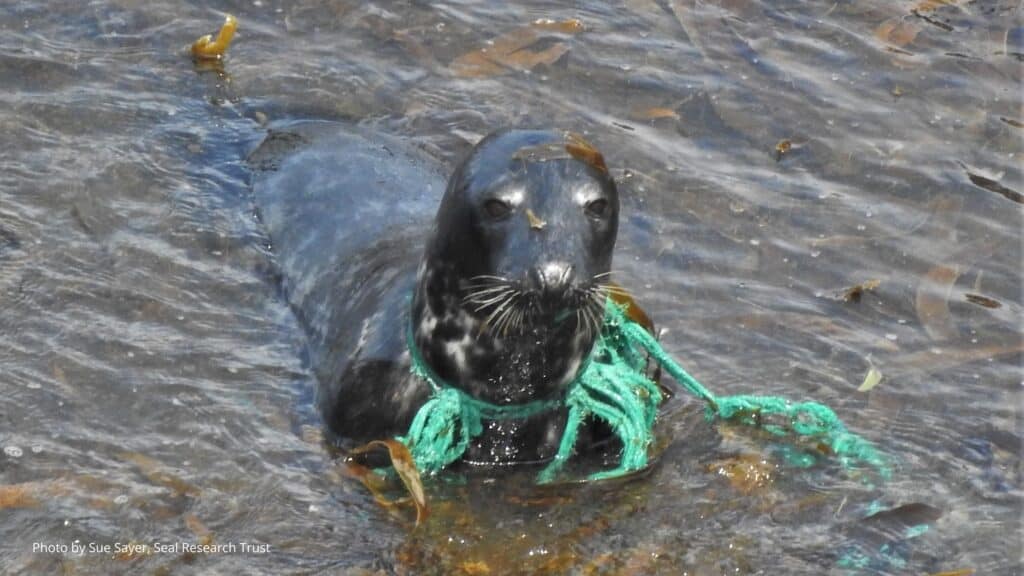
Why are pups so vulnerable?
Seal pups are exceptionally vulnerable due to a combination of factors related to their life cycle and environment. As newborn pups they have little blubber and lack the muscles for mobility, making them more susceptible to storm surges and disturbance. It is therefore essential that they grow as fast as possible, and this is why human disturbance must be avoided as it can interfere with feeding regimes:
- Day 1 – Pups are weak and disorientated with developing motor skills. Their tummies are small, so pups have more frequent short feeds.
- End of week 1 – Well-fed pups will have lost their rolls of skin as they have stocked up on fat reserves.
- Week 2 – Pups have put on weight and look like fat torpedoes. Feeds are less frequent but last longer.
- Week 3 – Pups need to resemble a fat, bloated barrel to make it through their first winter. Every missed feed, as a result of human presence, results in 1% of their nursing nutrition being lost and reduces their survival chances.
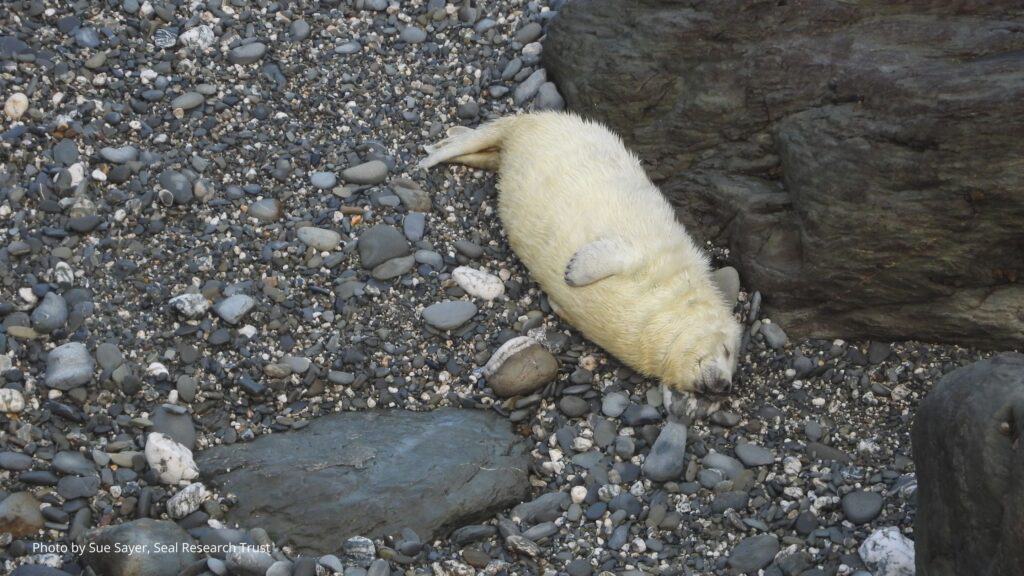
How citizen scientists and guardians are helping our pups
When pups are born on publicly accessible beaches they are most at risk from human disturbance and this is a huge challenge, requiring a humungous team effort, and this year has been no exception.
After being alerted about a small white-coated pup on a publicly accessible beach with a high footfall clifftop, fantastic volunteers and organisations sprang into action. The Seal Research Trust, British Divers Marine Life Rescue (BDMLR), the Cornish Seal Sanctuary, and Newquay Marine Group volunteers joined forces to be present to engage with members of the public during daylight hours. They monitored the mum, pup, and beachmaster (the term used to describe dominant male seals), and they spoke to the public to raise awareness of how best to act and help.
SRT set up a rota covering 10:00 until 20:00 for volunteers to sign up, and in total over 13 days, 33 different volunteers donated 212 hours of their time and engaged with at least 768 members of the public. This is a huge achievement, and most importantly the pup is thriving and has already fattened into a barrel shape – just what we all want to see to ensure the best chance of surviving the winter!
Of course, this experience is replicated right around our UK coastline, so if you see a seal and you are concerned for its welfare, stay at least 100m away or back out of sight on the path and encourage others kindly to do the same. You can also ring BDMLR 01825 765546 who will send out a trained Marine Mammal Medic to assess the situation.
What can we all do to help?
Firstly, we all need to follow the Defra Marine and Coastal Wildlife Code, which gives advice on how you can help minimise disturbance to wildlife when you visit the coast.
But to keep it simple, we all need to stay at least 100m away from seals that are on the land and in the sea. Stay on paths and off beaches where seals are sleeping. If you’ve got dogs with you, the same distances apply and please keep them on a lead and under control, as even with well-behaved dogs, you have no idea how they will react when they meet their first seal.
Seals only spend 20% of their time on land, and during this time they must sleep well as it’s vital to their health and wellbeing (just like it is for us). If seals are awake, alert and looking at us then they are aware of our presence and are wasting precious ‘survival vital’ energy! This is most true for pups as they need all the time they can get to rest and feed.
Another way you can help our seals is by learning more about them and becoming an advocate for their protection and conservation. There are lots of useful websites and resources (see below) that provide a wealth of information and advice, plus I teach courses with the Field Studies Council that cover everything from seal biology to conservation techniques.
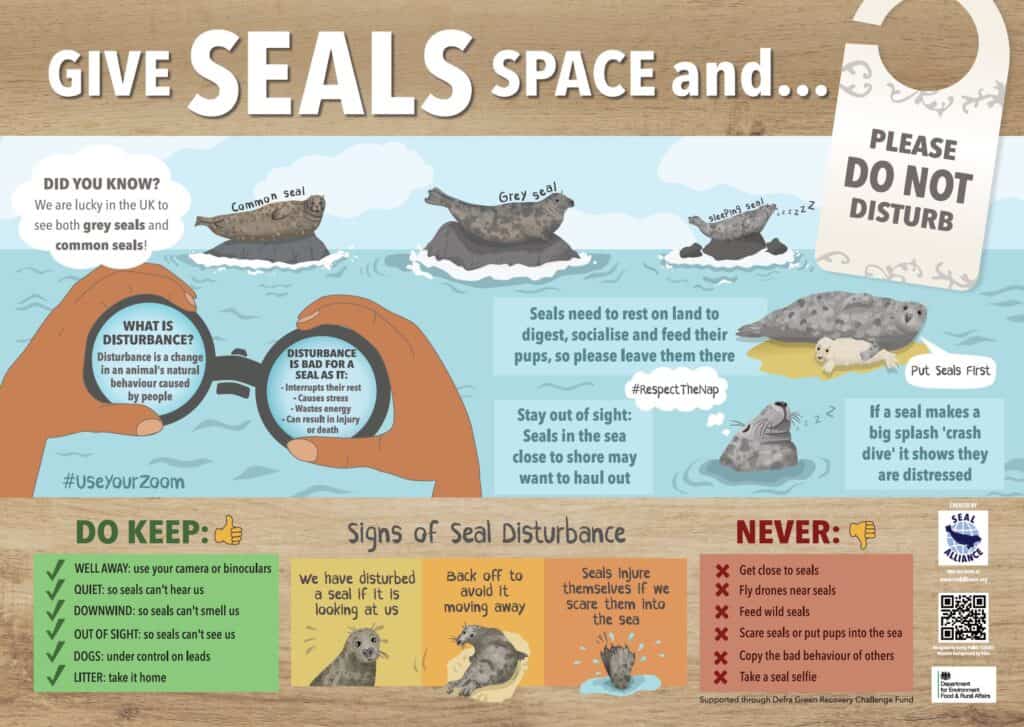
Field Studies Council courses with Sue Sayer MBE
- Discovering UK Seals: Identification, Ecology, and Conservation – Dates for 2024 coming soon, sign up for our newsletter to hear about new releases.
- Seal Field Skills to Inform Conservation – You can join Sue in November 2023 for this course that equips you with the knowledge and skills required to start recording and surveying seals.
Useful links
- Seal Research Trust Website
- Adopt a wild seal and get quarterly updates on its life story and that of all its friends
- Defra Marine and Coastal Wildlife Code
- Seal Research Trust Facebook
- Seal Research Trust Instagram
- British Divers Marine Life Rescue website
- Cornish Seal Sanctuary
